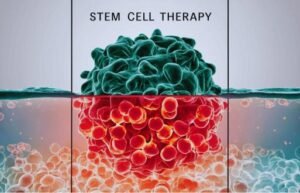Stem cell therapy has emerged as a groundbreaking medical advancement, revolutionizing the field of medicine. With its potential to treat a wide range of diseases and injuries, stem cell therapy has garnered significant attention and is poised to shape the future of healthcare. In this article, we will explore the success stories, benefits, treatments, and the promising future of this therapy.
Stem Cell Therapy Authentic Success Stories

Stem cell therapy has transformed the lives of countless individuals, offering hope where there was once despair. Success stories abound, showcasing the remarkable potential of this innovative treatment. Patients suffering from conditions such as spinal cord injuries, Parkinson’s disease, multiple sclerosis, and even certain types of cancer have experienced remarkable improvements in their quality of life.
One such success story involves John, a 45-year-old man diagnosed with spinal cord injury after a car accident. Traditional treatments offered limited results, leaving John paralyzed from the waist down. However, stem cell therapy provided a glimmer of hope. Through the transplantation of stem cells into his injured spinal cord, John regained sensation and motor function, enabling him to walk again. His story is just one example of the life-changing impact this therapy can have.
Medical Advancements in This Therapy

The field of stem cell therapy is constantly evolving, driven by ongoing research and technological advancements. Scientists and medical professionals are continuously exploring new ways to harness the potential of this cells for therapeutic purposes. From improving the efficiency of stem cell production to enhancing their differentiation capabilities, these advancements are paving the way for more effective treatments.
One notable breakthrough is the development of induced pluripotent stem cells (iPSCs). These cells are derived from adult cells, such as skin cells, and reprogrammed to possess the characteristics of embryonic stem cells. iPSCs offer a promising alternative to embryonic stem cells, eliminating ethical concerns while providing a readily available source for personalized therapies.
The Future of Medicine: Stem Cell Therapy

As we look ahead, the future of medicine appears increasingly intertwined with this therapy. The potential applications of this revolutionary treatment are vast, encompassing a wide range of medical conditions. From regenerating damaged tissues to replacing organs, this therapy holds the promise of transforming healthcare as we know it.
One area where this therapy shows great promise is in the treatment of neurodegenerative diseases. Conditions such as Alzheimer’s and Parkinson’s disease, which currently have no cure, could potentially be managed or even reversed through the targeted use of stem cells. By replacing damaged neurons and promoting neural regeneration, this therapy offers hope for millions of individuals affected by these debilitating conditions.
Benefits

The benefits of stem cell therapy extend far beyond its potential to treat specific diseases. Stem cells possess unique properties that make them an invaluable tool in regenerative medicine. Some of the key benefits of this therapy include:
-
- Regeneration: Stem cells have the remarkable ability to differentiate into various cell types, allowing them to regenerate damaged tissues and organs.
-
- Reduced Risk of Rejection: Its can be derived from the patient’s own body, reducing the risk of rejection or complications associated with traditional organ transplantation.
-
- Minimally Invasive: Many these therapies are minimally invasive, offering a safer and less traumatic alternative to traditional surgical procedures.
-
- Personalized Medicine: this therapy can be tailored to each individual’s unique needs, offering personalized treatment options that maximize effectiveness.
Treatments
Stem cell therapy encompasses a wide range of treatments, each tailored to address specific medical conditions. Some of the most notable stem cell therapies include:
-
- Bone Marrow Transplantation: This well-established this therapy is used to treat various blood disorders, such as leukemia and lymphoma. its are harvested from the patient’s bone marrow or a compatible donor and transplanted to replace diseased or damaged cells.
-
- Mesenchymal Cell Therapy: Mesenchymal stem cells, derived from sources such as bone marrow or adipose tissue, have shown promise in treating conditions like osteoarthritis, autoimmune diseases, and tissue injuries. These cells possess anti-inflammatory properties and can promote tissue regeneration.
-
- Embryonic Cell Therapy: Embryonic stem cells, derived from early-stage embryos, have the potential to differentiate into any cell type in the body. While controversial due to ethical concerns, they offer immense potential for regenerative medicine.
-
- Induced Pluripotent Cell Therapy: As mentioned earlier, induced pluripotent stem cells (iPSCs) are reprogrammed adult cells that possess similar properties to embryonic stem cells. iPSCs offer a versatile and ethically acceptable source of stem cells for various therapeutic applications.
In the End
The next phase of cell and gene therapy is centered on the practical application of the cell treatment. In order to improve future experiences, it
is essential to exchange applied study experiences. The outcomes of clinical applications are compiled in this chapter under the three primary headings of cellular therapies: multifactorial defects, functional defects, and cellular defects.
A possible treatment for autoimmune, degenerative, traumatic, and hereditary illnesses is stem cell therapy. It takes a methodical approach to create a therapy plan. Future developments in medicine will be shaped by more clinical applications, which are promising based on preliminary results.
